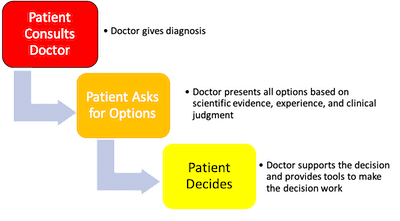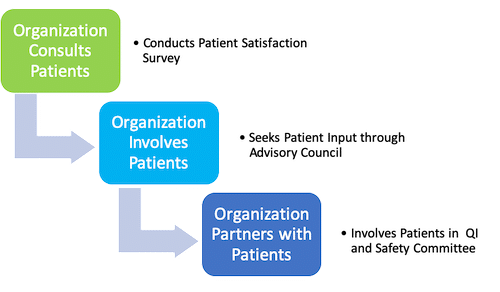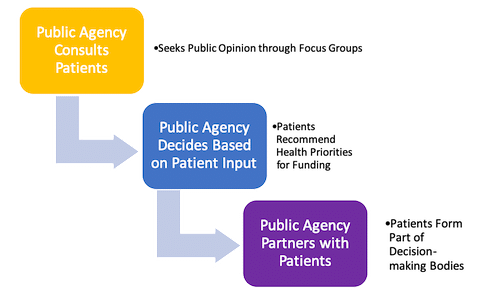
Gone are the days when doctors assume the know-it-all role. Patients no longer want to take the backseat when it comes to their medical care. Today we are talking about patient engagement.
In the past, patients went to their doctor’s office with more questions than answers about their health. Now, most patients have looked up information on the internet before they go to a consult. They have read about their symptoms and talked with their friends and families. They may even have a list of options that they think would solve their problem.
Patients want to partner with their providers when it comes to their health. Doctors who refuse to engage with their patients will lose them in the end. Either they lose the patient to the disease or lose the patient from their practice.
What is Patient Engagement?
According to a research article by Kristin Carman, et al. in Health Affairs, patient and family engagement is when “patients, families, their representatives, and health professionals work in active partnership at various levels across the healthcare system—direct care, organizational design and governance, and policymaking—to improve health and health care.”
In short, patients are engaged in their healthcare when they share in the decision-making process and management of their condition.
Why Should You Engage Your Patient?
Recent studies have shown that engaged patients have better health outcomes, get better quality of care, and pay less in health care expenses.
Empowering the patient is much like teaching them how to fish rather than giving them the fish. Patients who know self-care tend to be healthier.
How Do You Engage Your Patient?
The foundation of patient engagement remains basic. Establish a good doctor-patient relationship. Break down the barrier, whether social, language or health literacy barriers. Then the rest of your engagement strategies will be effective.
How do you get started?
Here are key findings from the 2013 Health Policy Brief by Health Affairs to give you some guidance on how to engage your patients.
According to Kristin Carman, et al. of the American Institutes for Research, patient engagement occurs in three levels.
The first is at the direct care level, that is, between the doctor and the patient.
Figure 1. Patient Engagement at the Direct Care Level
What Strategies Can You Use at the Direct Care Level for Improved Patient Engagement?
1. Use Decision Aids
David Veroff, et al. at Health Dialog used studied a large group of patients with:
- heart disease
- benign disease of the uterus
- benign enlargement of the prostate
- hip pain
- knee pain
- back pain
Trained coaches engaged one group in the decision-making process through phone, mail, and or online support.
The other group got the usual support that coaches give. The coaches:
- Presented their treatment options
- Sought patient preference
- Encouraged patients to convey their preferences to their health care providers
Patients who got enhanced support through digital and non-digital means spent 5.3 percent lower in medical costs. They got fewer hospital admissions than the other group by 12.5 percent.
How do you adapt this idea to your practice?
- Use your website to provide online support, including decision aids through videos and blogs.
- Enhance patient education with tools that the patient can access through your website.
- Increase patient access to healthcare providers through chats and secure patient messaging.
- Enable patients to log in through a secure patient portal to convey lab results and allow for patient questions.
2. Patient Activation
Hibbard, et al. at Fairview Health Services found out that those patients who know how to manage their health incurred a lower cost in health expenses.
Those who are not “activated,” meaning they aren’t confident or skilled to take care of themselves, spent 8 to 21% more in medical expenses.
How can you activate your patient in the digital world?
You can maximize the use of your website. Create a tab where you list the available resources that the patient can use to learn more about his diseases and how to manage it.
For example, if your patient has diabetic retinopathy, you can have a blog that outlines your strategy in managing this disease. You can also have a list of other legitimate and credible websites where your patients can get their information. You can post links to journals and studies that show the current trends and approaches. To aid in the patient’s decision-making, ensure that the information you post is readable.
Many patients, even those who hold advanced degrees, are not health literate. The MBA holders will know business technical jargon, but medical terminologies will sound Greek to them.
The second way that patient engagement occurs is at the organizational level, that is, between the institution and the patient.
Figure 2. Patient Engagement at the Organizational Level
What Engagement Initiatives Can You Use at the Organizational Level?
Smaller institutions engage their patients at this level through patient satisfaction surveys and patient reviews. You can easily automate this process through email surveys after every patient visit. Ensure that you get the email addresses of your patients along with their other contact information. You can also mail a survey card with an online link to give more flexibility to your patients.
Many larger institutions invite patients to become part of their advisory council, QI committee, and safety committee. Some ways to increase patient engagement is to do the meetings online or both. Having a patient forum page on your website may encourage the formation of advocacy groups who tend to be more engaged with healthcare issues. Recording your advisory council meetings and posting them on a private channel on YouTube can drive patient engagement to the next level.
All these strategies aim at providing the best positive patient experience.
The third level of patient engagement is at the policy-making (society) level, that is, between public agencies and the patient.
Figure 3. Patient Engagement at the Policy-Making Level
Get Patient Feedback
Encouraging patients to air their thoughts on policies will drive patient engagement. Provide platforms where you can help patients navigate the insurance world. Have an FAQ on your website or list links where they can read about insurance coverage.
What are the patients’ problems and issues that need policies in place?
Can you act as an advocate by giving the patients the venue to voice out their challenges?
You can use digital technology and innovation to reach out to your patients. Even social media can provide a platform where patients can air out their concerns that may need healthcare reform.
Do you have a dedicated marketing department that covers patient stories that may capture the eye of a policy-maker? There are many innovative and creative ways to do more and be more for your patients.
Increasing patient engagement should not be an impossible hurdle for you. Patients engage when the providers and institutions engage and commit themselves to improving patient care. Strategies will emerge when you listen to your patients and take time to assess their needs.
What about you? Have you found better ways to actively engage your patients? Let us know in the comments below!
We Can Help
If all of these patient engagement marketing strategies sound too technical for you, reach out to us here for a free review and leave the digital marketing of your practice to us. This way, you can focus on caring for your patients.





